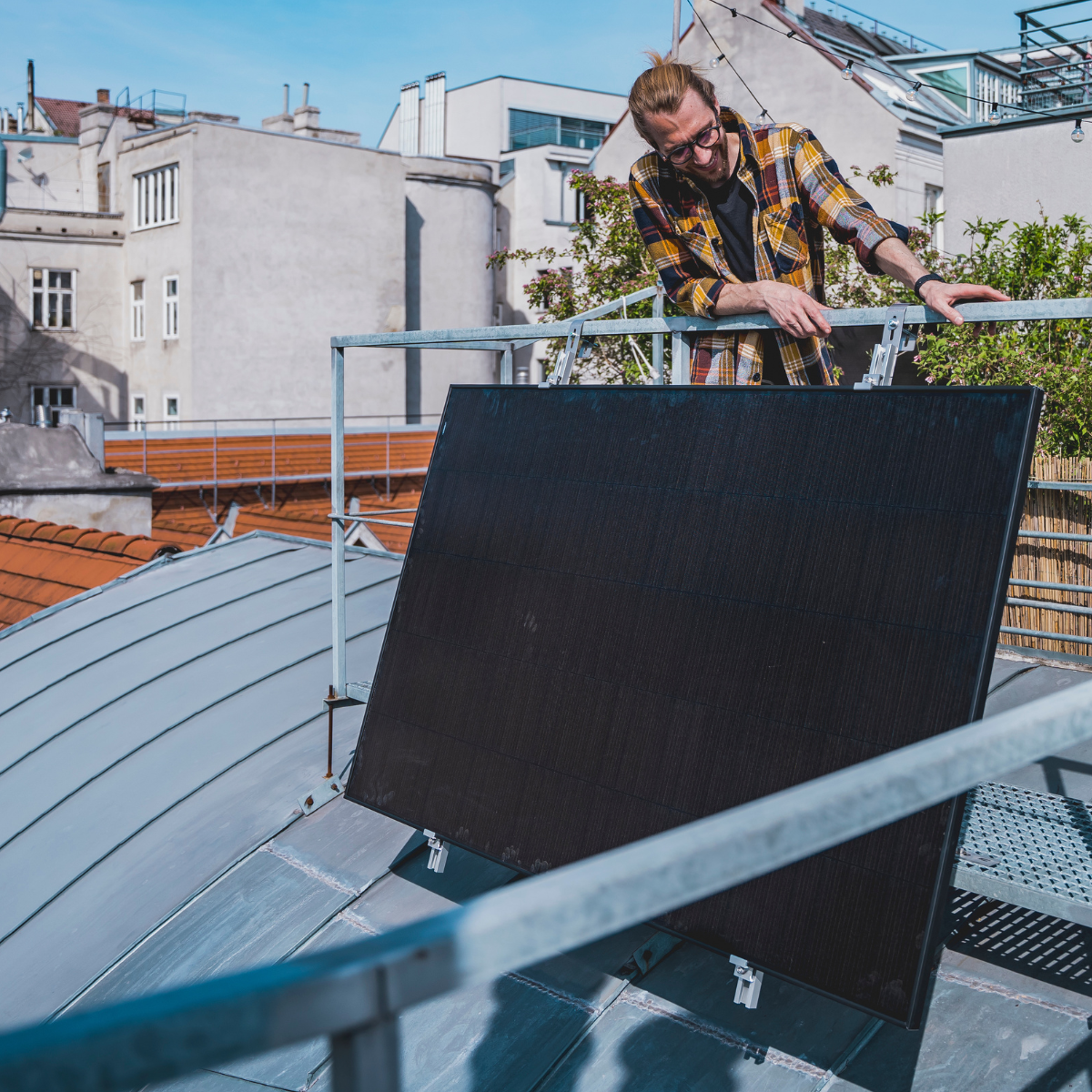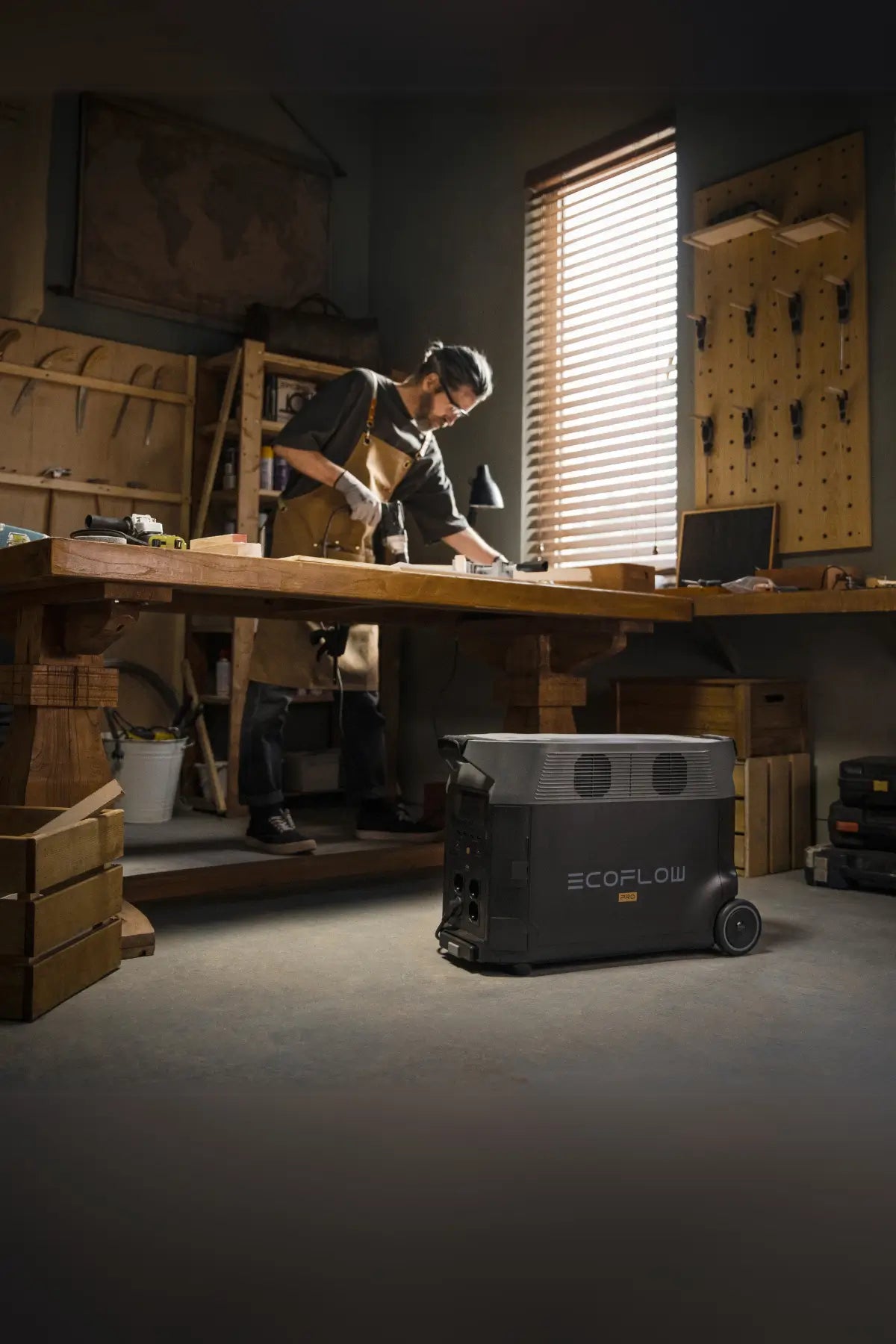The mobile use of power tools on construction sites can be quite challenging and unnecessarily prolong work hours – for example, when there is no power outlet or generator available and the construction site power distribution box is far away or simply overcrowded. A mobile power station can help. Compact energy storage units provide you with enough power to operate all your power tools – just as easily as from a conventional power outlet.
Maximum performance and capacity for all applications
The most important parameters for a power station are the power and the capacity. Performance This is expressed in watts and indicates the maximum power output at a given time. This means it is calculated from the total power of all the individual devices connected to the power station simultaneously. Therefore, to operate a 1200-watt saw, a 2000-watt power station is sufficient. If you want to operate an 800-watt drill and perhaps another 1000-watt saw at the same time, you'll need a power station with at least 3000 watts of power.
The capacity Energy, on the other hand, is measured in watt-hours (Wh). This indicates the wattage a device consumes in one hour. For an electric saw with 1600 watts of power, this is 1600 Wh per hour. The formula for calculating this is therefore quite simple. Power in watts x time in hours . When operating multiple tools in parallel, simply add the numbers together to determine whether the storage capacity is sufficient for the entire workday.
Continuous output power and peak power
Some electrical devices require a significantly higher initial power output than the specified wattage, known as the starting or starting current. To operate these tools without the generator shutting down for safety reasons, it must be capable of delivering a higher peak power output in addition to the continuous output power. This peak power, specified by manufacturers, also allows you to operate electrical devices with a higher power output than the continuous output power. This is usually possible for a short period of time, from several seconds to a minute.
Li-ion or lithium iron phosphate battery for the power station?
Both variants have become established in battery technology in recent years. Both types have their specific advantages and disadvantages. Li-ion batteries discharge faster, and LiFePO4 batteries also have a longer life cycle capacity, which also scores points for their resistance to high temperatures. Due to the raw materials used, they are more environmentally friendly than Li-ion batteries, cheaper to purchase, and safer to use. One disadvantage of LiFePO4 batteries, however, is their greater weight. Due to their larger storage capacity, LiFePO4 batteries are generally better suited for powering electrical devices.
Emission-free and environmentally friendly operation
Unlike the diesel or gasoline generators often used on construction sites, which release a lot of pollutants into the ambient air, a solar generator operates completely emission-free – and virtually silently. This not only conserves valuable resources but also harms the environment. The 2000-watt capacity of power stations is often enough for an entire workday.
If you recharge the power station after work using solar modules instead of a power outlet, you are making a further contribution to environmental and climate protection – and saving on energy costs at the same time.
Robust for use on construction sites
On construction sites and in trades, fine dust, dirt, and even splash water can repeatedly damage a power station. Therefore, when purchasing, look for a model like the EcoFlow Delta Pro, which has a suitable protection rating such as IP 65 (dustproof and jet-proof), making it suitable for use in more than just indoor environments.
And of course, the housing should also be made of metal or sturdy plastic to provide protection against mechanical stress on the construction site.
Mobile and compact for use on the go
The greater the power output of the power station, the heavier the storage unit becomes—which, in turn, negatively impacts mobility. However, even devices with comparable power from different manufacturers offer differences in handling. For example, the Bluetti AC200MAX, with its 2048 Wh, weighs around 28 kg, while the Jackery Explorer 2000 Pro, with a comparable 2160 Wh, weighs just 20 kg.
Solar generators with an output of over 5000 Wh can easily reach a weight of over 50 kg, which seems rather impractical for mobile use on construction sites and in trades if you want to not only store the storage unit in the vehicle but also transport it directly to the work site.
Versatile connections for all electrical devices
Most electrical devices and tools operate using a standard 230V power plug. A power station usually has at least one Schuko socket, and larger devices have several. This allows you and your colleagues to operate multiple devices simultaneously.
In addition to operating tools, the power station is also ideal for charging batteries using the charging station. This allows you to work with cordless tools on the construction site completely remotely while the removable battery charges. Annoying forced breaks due to charging times are a thing of the past.
In addition, the energy storage units offer a range of additional connections for charging your mobile phone or notebook, connecting a coffee machine during a break, or even operating a radio.
Flexible charging options for the power station
Power stations offer a variety of charging options. For tradespeople and mobile use on construction sites, charging from a wall outlet is the most suitable option, ensuring the generator is fully operational before work begins. Charging times generally range between 2 and 5 hours, meaning they vary considerably depending on the model. However, the time between finishing work and leaving for the construction site the next morning is always sufficient to fully recharge the battery.
Another sustainable and completely free alternative is charging with solar panels. Simply connect these to the power station and align the panels with the sun. The battery is then charged in just a few hours – completely environmentally friendly and completely free. This option is particularly ideal if you want to use the power station stationary in your workshop and save on energy costs.
Power stations for tradespeople – what power is needed?
The optimal power output for the power station ultimately depends entirely on your personal needs. In many cases, a 2000W power station is sufficient to operate one power tool. Its weight also offers the advantage of mobility to the work site. If you want to use several tools at once and intend to store the storage unit permanently in your vehicle or use it stationary in your workshop, a 5000W power station might be the right choice. If the solar generator is ultimately only intended to be used to charge tool batteries, you can opt for a compact model with 1000W output.
Our experts will be happy to advise you in a non-binding consultation on possible solutions for power stations in trades and on construction sites.









